Хаас за Италия
Ромер Грожан:
In the series’ most recent race in Belgium, Rich Energy Haas F1 Team returned its cars to a single aero spec. After running its two cars in different aero specs in the three races prior to Belgium, how helpful was it to have both cars theoretically bringing back the same data?
Well, I don’t think we had a choice for the low-downforce races, but I was actually quite happy with the package. We’re working in a good direction as a team. I think we now have a really clear understanding of what’s happening and what we need to do for the future, so that’s positive.
The summer shutdown is always welcomed by the Formula One industry, but how good was it to get back in your racecar at Spa? And more specifically, what do you want to achieve in this last stretch of races before the season concludes?
I really enjoy jumping back in a car – it’s a great feeling, especially at Spa-Francorchamps. It’s one of the most amazing circuits in the world. That was super cool. Obviously, you come fresh from the summer break, which always helps, but I really enjoyed it. For the final stretch of the season, we’ll try to get every opportunity we can. It’s not always going to be easy to be in the points, but every time we can, we will try.
Monza, like Spa, is a circuit steeped in the heritage of Formula One, with the Italian Grand Prix also marking the end of the European schedule. As a driver, are you able to appreciate and soak in the atmosphere at such iconic venues, and do you feel some of the newer events on the calendar, such as Singapore, Austin and Abu Dhabi are developing a level of history and heritage for themselves?
Spa, Monza, Monaco, Barcelona and Silverstone – they’re very historic tracks where we feel the history. Some of the new tracks are getting there. I feel Austin is great, Singapore is great also. You can now tell that Formula One has been there over a few years – that people get a sense for it and really enjoy it.
The Tifosi are a renowned part of the spectacle at the Italian Grand Prix with their passionate support of the home team, Scuderia Ferrari. How would you describe your fan base and what are your own fan highlights from being in Formula One?
The fans are great. They really give you a lot of support and admiration. Obviously, the Spa weekend was very hard for everybody, but the whole motorsport community came together – drivers, teams, marshals, officials and fans. It was really something unique. The fans are important, and they can really help you through tough times. It’s always great to have them.
Кевин Магнусен: In the series’ most recent race in Belgium, Rich Energy Haas F1 Team returned its cars to a single aero spec. After running its two cars in different aero specs in the three races prior to Belgium, how helpful was it to have both cars theoretically bringing back the same data?
We ran the newest spec in Belgium, which was good to have both cars running it, in order to compare across the cars. We also had to do it, as we can’t run a low-downforce spec with the old spec car. It was a natural decision, but good for the future.
Did the time spent at Spa-Francorchamps – a high-speed, low-downforce venue similar to Monza – assist in your preparation for the Italian Grand Prix? Do the two tracks have enough similarities where there’s significant carryover from one venue to the other?
Yes and no. We run the car with even lower downforce in Monza, so it’s not going to be the same car, but there are some things you can carry over with setup. Feeling the car at low downforce at Spa gives you an idea as to how it will feel in Monza.
The summer shutdown is always welcomed by the Formula One industry, but how good was it to get back in your racecar at Spa? And more specifically, what do you want to achieve in this last stretch of races before the season concludes?
It was good to get back in the car, but it was good to have had a bit of a break also. It doesn’t take long to miss being in a racecar, so coming back and racing it at Spa was good. It wasn’t a good weekend in Spa with the accident in F2, obviously. For Monza, hopefully as a team we’ll have a better weekend. As for the last stretch, I want to achieve more points. Hopefully, we can grab that opportunity if it comes. We don’t always have the pace in the car – we’ve learned that this year – but we just need to grab it if it comes.
Monza, like Spa, is a circuit steeped in the heritage of Formula One, with the Italian Grand Prix also marking the end of the European schedule. As a driver, are you able to appreciate and soak in the atmosphere at such iconic venues, and do you feel some of the newer events on the calendar, such as Singapore, Austin and Abu Dhabi are developing a level of history and heritage for themselves?
The older tracks with history are great. It’s good to go to those kinds of places. As drivers we love it, and I think the fans like it as well.
The Tifosi are a renowned part of the spectacle at the Italian Grand Prix with their passionate support of the home team, Scuderia Ferrari. How would you describe your fan base and what are your own fan highlights from being in Formula One?
Monza’s obviously known for the Tifosi, and it’s great to see and experience. My own fan base is spread out across the year. Spa is probably one of the races that attracts the most Danish people. It’s the race closest to Denmark, so quite a few people drive down there. Italy is a race that quite a few go to as well. I enjoy those races because of that.
Гюнтер Щайнер: In the series’ most recent race in Belgium, Rich Energy Haas F1 Team returned its cars to a single aero spec. After running its two cars in different aero specs in the three races prior to Belgium, how helpful was it to have both cars theoretically bringing back the same data?
Now knowing what we want to go forward, it’s always helpful because when you organize the fly-aways, having two different car specs makes everything even more difficult because you have to fly around double the amount of spares, as obviously some of the parts are different. Looking back now and having an understanding of our development work, it worked out, it’s good. Now being back to having the same car makes the rest of the season a lot easier, logistically.
Will you continue with both cars in the same aero spec at Monza, and will the time spent at Spa-Francorchamps – a high-speed, low-downforce venue similar to Monza – assist in your preparation for the Italian Grand Prix?
You’re learning in every race and whatever you learn, you take it forward to the next event. Monza, being a low-drag circuit – the lowest on the calendar – for sure, having run something at Spa with just a little bit more downforce than needed in Monza, it will help us learn and get prepared for Monza. You need the lowest drag possible at Monza because of the long straights. We will have, like every year, a different rear wing.
As teams begin turning their attention to next year, they also have an eye on 2021 where significant technical regulations will influence a new generation of Formula One technology. A key element of these regulations will be a standardization of parts in order to reduce costs. What’s your take on parts standardization, and are there certain pieces of the car that can be the same for everyone and other pieces that should never be standardized?
I think we have to be careful that we’re not changing the DNA of Formula One, which is about developing your own car. I think as long as we have a cost cap like the one proposed now going into 2021, standardization doesn’t really make sense. Everybody should be free to spend their money where they want. If we have some standard parts where we level the playing field, like pit equipment, that’s OK, but on the car, the DNA of Formula One means your own development. We are well under the budget cap being proposed, so I don’t know if it’s really a money-saver in the end. It hasn’t been defined what will be standardized parts. It’s maybe too early to talk about it or be critical about it. We have to wait a little bit until we know exactly what the aim is.
Rich Energy Haas F1 Team has supplier agreements with Ferrari and Dallara. Those are relationships you fostered and have nurtured since the team’s debut in 2016. How comfortable would you be with a supplier you didn’t have that kind of relationship with – one that was mandated by the series?
If the series mandates certain parts, for sure they’ll have done their due diligence, and it should be in accordance with the teams so that they are all happy. I can live with that. If they just go to some suppliers, and if we feel they cannot do the job, we should have a say in it. The 10 teams know more about building a car than all the other authorities.
You have one of the best seats for how the 2021 rules package is shaping up. Will the DNA of Formula One car construction stay intact, where each team is a constructor building their own racecar?
The DNA has to stay, otherwise it’s not Formula One anymore. It would be a spec series, and we know how that normally goes. I think the commercial rights holder will make sure the DNA stays intact and that Formula One stays as Formula One. That’s what it needs to be.
What’s the best way to bridge the gap between the top teams in Formula One and the midfield – a budget cap or parts standardization? Can they coexist or are they mutually exclusive?
I think a budget cap should do the job. Everybody’s free to spend their money where they want to spend it. If somebody spends the money in a better way, good for them. They’ll be faster. That’s part of running a Formula One team.


















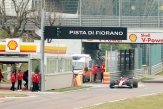
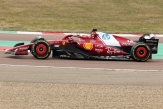
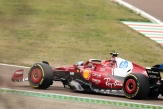
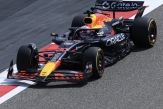
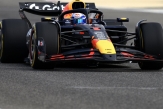


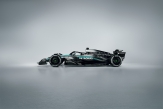
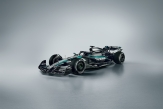

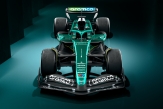
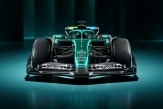
.jpg)
.jpg)
.jpg)

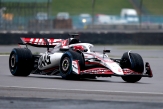

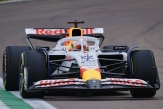
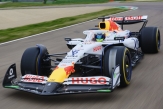



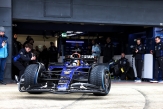
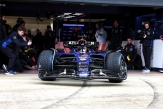
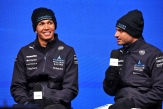

01/10/2025 от Огнян Тенчев (drJeckyll), няма коментари